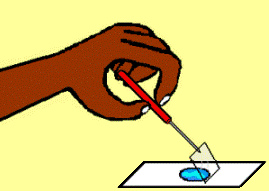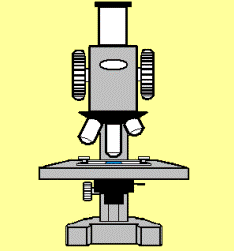 A site for
learning
about basic genetics
A site for
learning
about basic genetics  A site for
learning
about basic genetics
A site for
learning
about basic genetics |
| Home Genetics Genetic Crosses History Glossary Puzzles About this site Site map WebQuest |
What is genetics? The science of Genetics is basically the study of two things: 1. What controls the appearance and other characteristics of living things. 2. How characteristics are passed down from parents to their offspring. Genes Genes are the things inside of organisms that control their characteristics. Where are they? All living things are made up of one or more cells.
You may have done this
already in school. First you scrape some cells from the inside of your
cheek. (To see more, put the cursor arrow on pictures and wait a few seconds)
Then you put them on a slide, stain them, 
Finally you can look at your cells through a microscope 
The diagram which follows is to show you how DNA can tightly coil up so that the two sides of a chromosome (which are exact copies of each other) can be pulled apart during cell division. In this way each new cell gets a full copy of your entire set of genes.
(Please note that the diagram above is just a diagram, it does not show the exact appearance of DNA and Chromosomes.) |
||||||||
| Author: R. Wood contact email. Return to top |